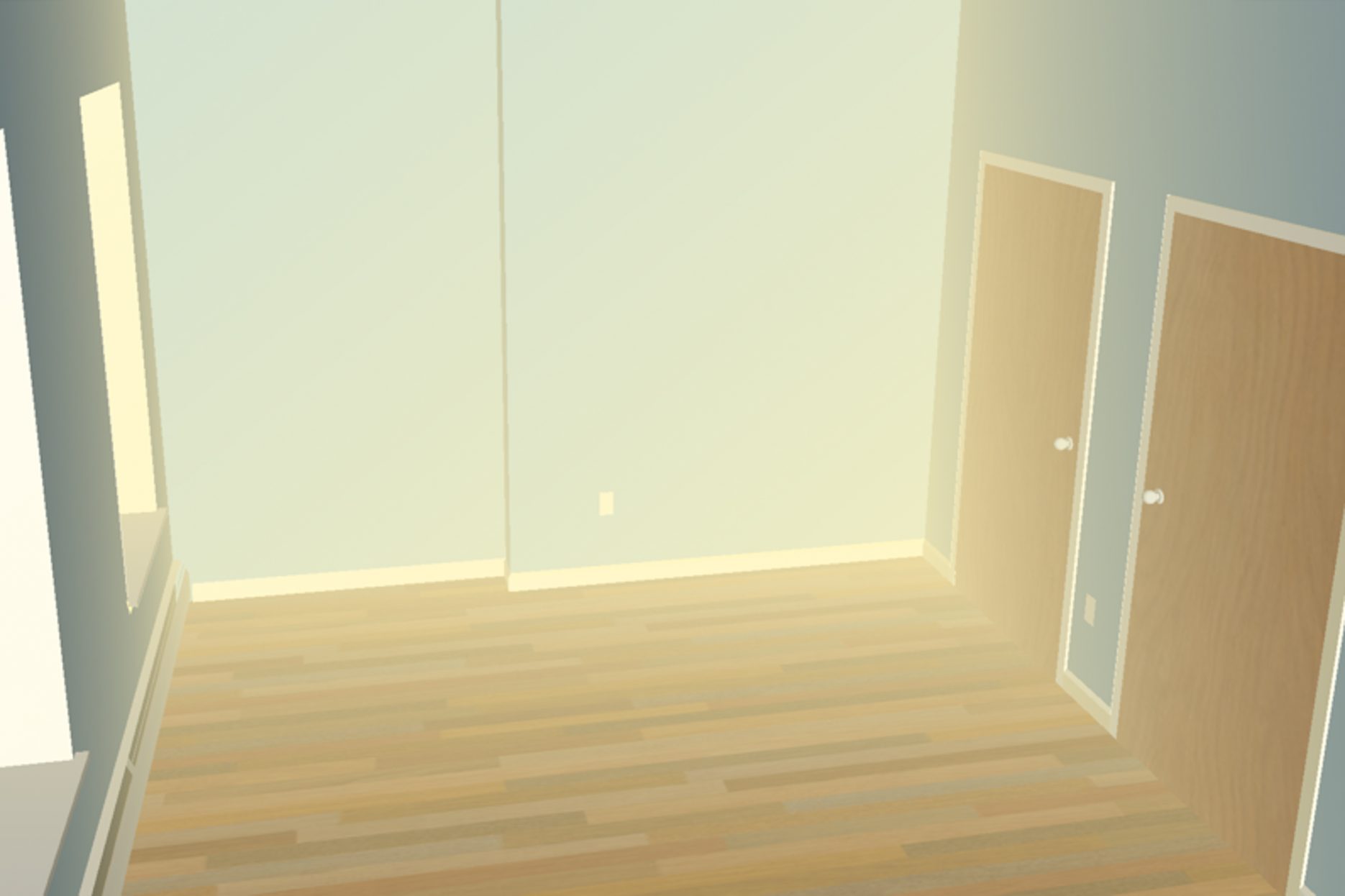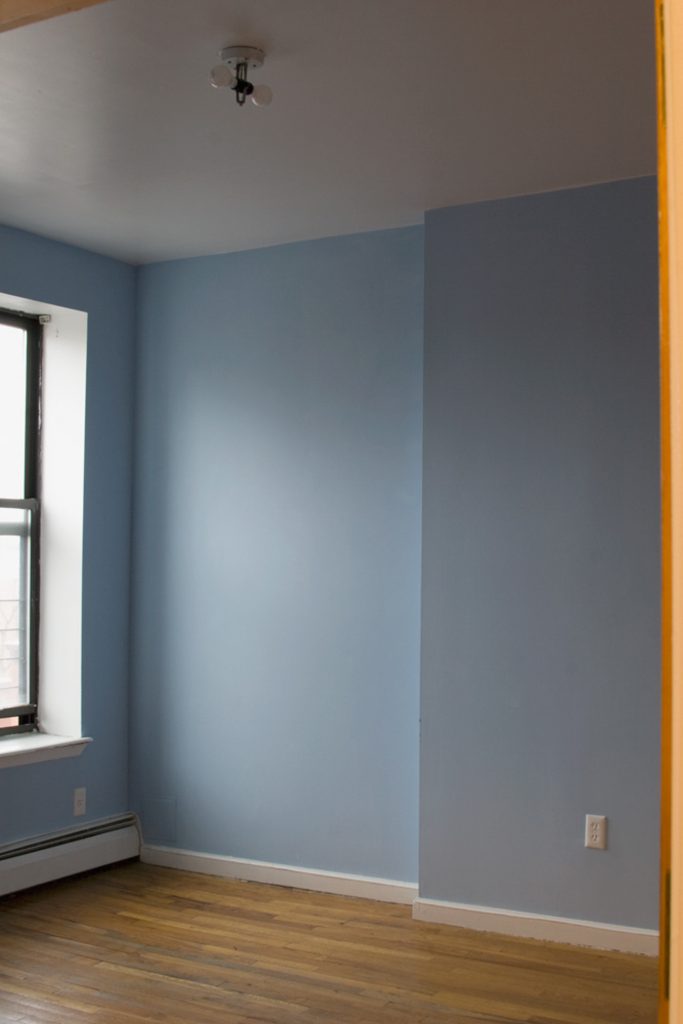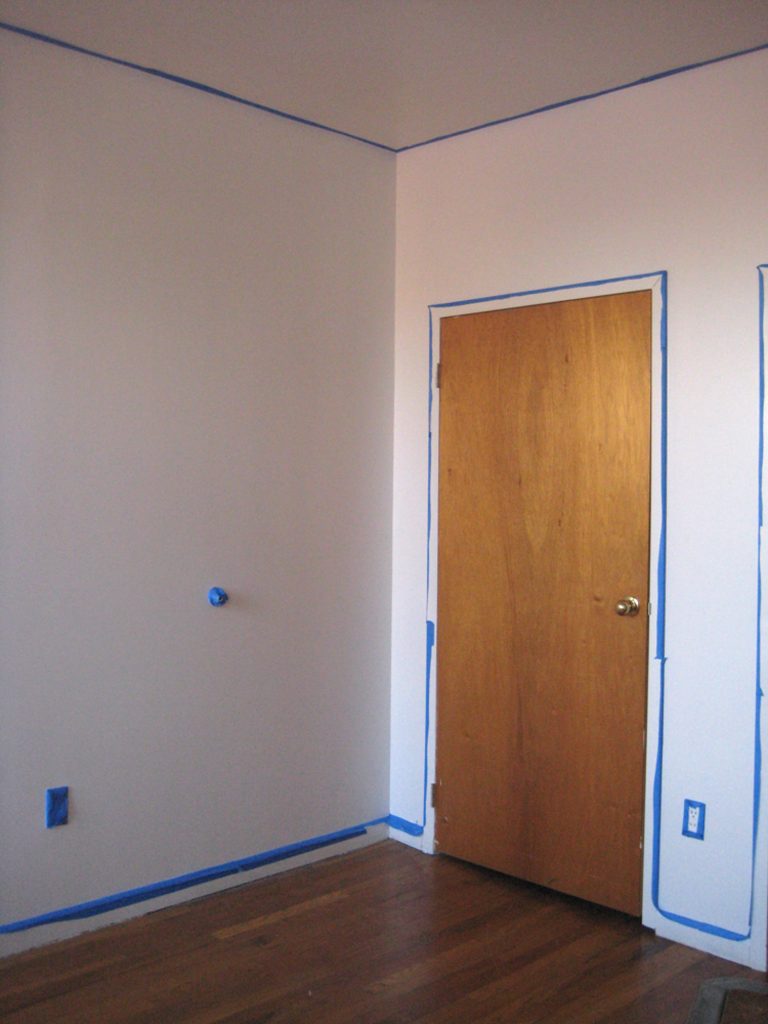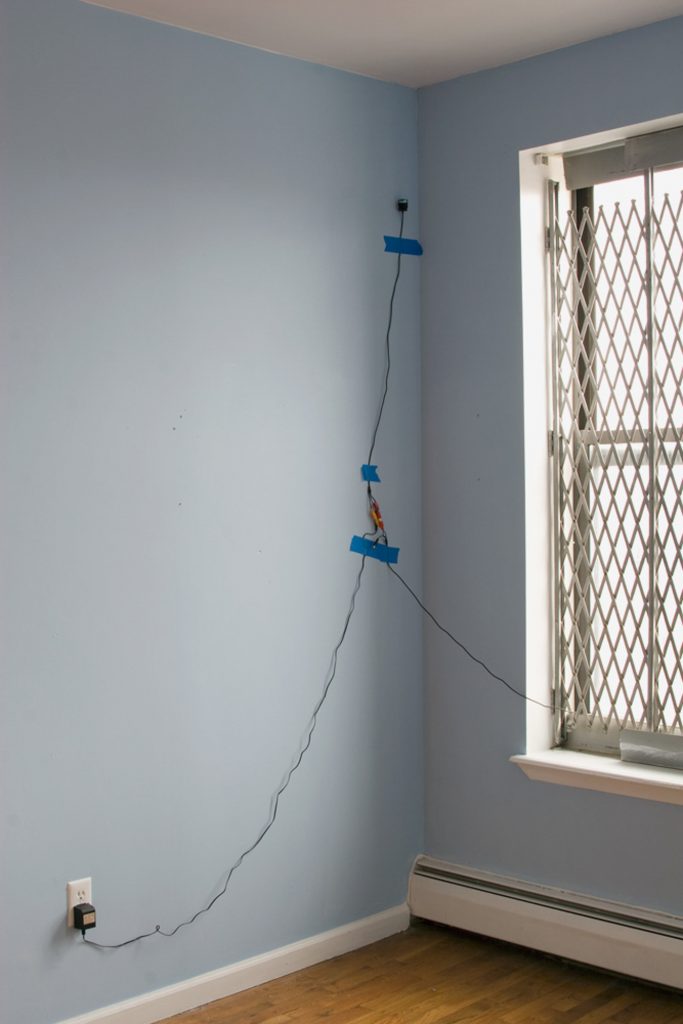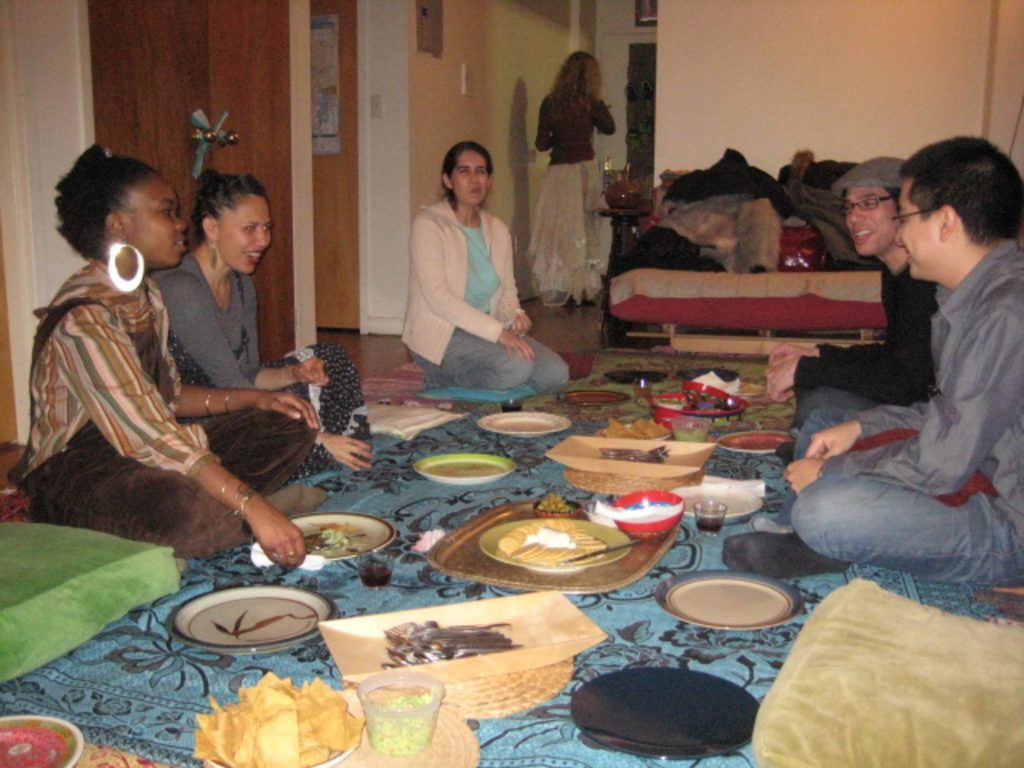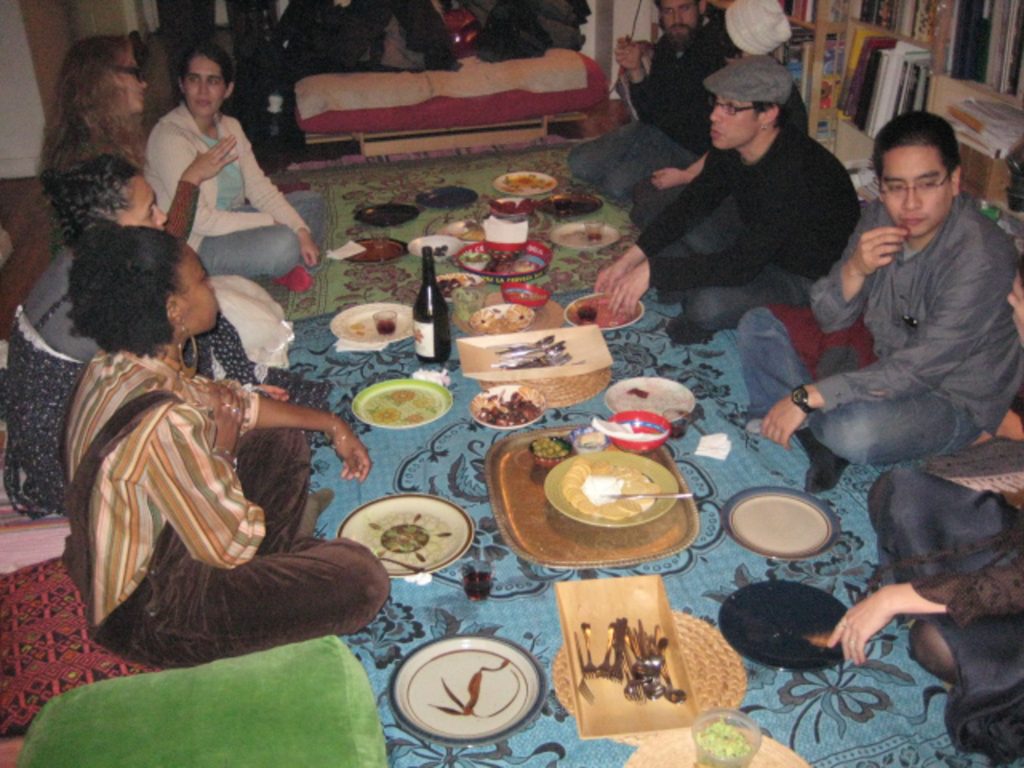Image: 3D rendering of the Bronx Blue Bedroom
Solo project, Bronx Blue Bedroom Project, NY, organized by Blanka Amezkua, 2009
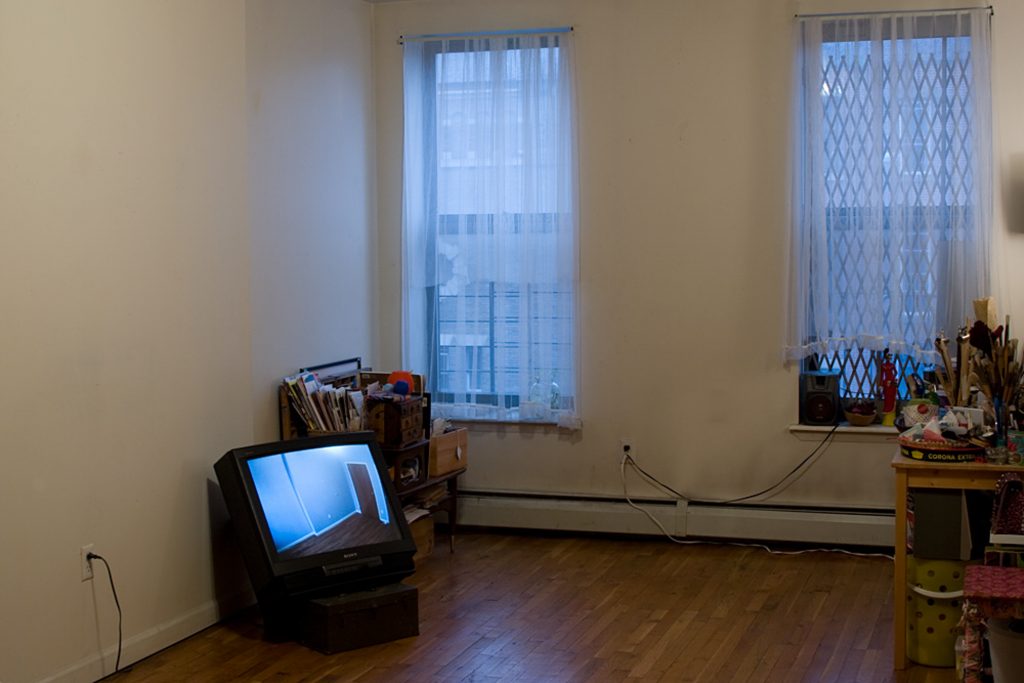
I first experienced the Bronx Blue Bedroom Project as a constant visitor over the span of the project, having moved upstairs several months after the project had started. Blanka is a very good and generous host, and the Bronx Blue Bedroom Project functioned as an informal apartment gallery where it seemed anyone could feel comfortable to look at art, whether totally new to the experience or as art scene insiders. Visitors – the audience – in a very direct way made the regular apartment become art space. Also important to note is that the space was bilingual – people spoke English and Spanish in more or less equal amounts.
Only secondarily and after some time did I engage with the project as an artist, asked to make a new and unique project in a space that many artists had already worked with. For my installation, I decided to concentrate on the space itself, both its physical and social dimensions, because I thought both were integral to the project.
My apartment upstairs had exactly the same layout as the Bronx Blue Bedroom Project apartment. I painted my second bedroom blue to mirror the Bronx Blue Bedroom below, and then installed a surveillance camera in my own new blue bedroom. Then I ran the video feed wire out of my window and into a downstairs window in the living room of Bronx Blue Bedroom Project, and displayed the live feed on a large television monitor installed there. I posted a paper sign on the door between the living room and the bedroom that said ‘please keep door closed’ and repeated the message to visitors. The bedroom itself was empty except for a dish placed on the floor corresponding with my cat’s water dish placed upstairs in the same location, which was visible in the video feed from upstairs.
Many people thought the video image was of the actual Bronx Blue Bedroom, and spent time inside the Bronx Blue Bedroom looking for the camera. They also opened the closets, examined marks on the walls left over from previous shows, and looked for the art which they were accustomed to experiencing in that room. The situation encouraged people to interact while they figured out the puzzle. Visitors turned the light on and off in the bedroom, moved the decoy dish on the floor around, pretended to light a cigarette to test if anyone would come in and stop them, and even semi-stripped. One person challenged my assertion that the video feed was live, and we bet on it – in the end I was handed less than a dollar in change after I brought him upstairs. Because we kept the door closed to the bedroom, it was sometimes hard to tell when people were in there, so that when people went in, they effectively disappeared.

The press release we wrote was deliberately vague, because I really wanted to create the unexpected. I also wanted to work with surveillance yet treat visitors in a comfortable way by not actually spying on them, and I think that worked out well. Also, the installation by design avoided any stigma about touching the art – as the art was the space and situation itself.
Every artist who showed at the Bronx Blue Bedroom Project was asked to put together a workshop, dinner, or other social event. I decided to create a dinner and to invite all of the artists who showed during the two year span of the Bronx Blue Bedroom Project, as they did not all know each other. We also invited a curator who is interested in do it yourself social art projects, and Blanka’s husband, Leo, who has been a quiet contributor to the project all along, taking photographs at each event and keeping the website current. Food and drink has been used at each Bronx Blue Bedroom Project opening as a way to make visitors feel comfortable, and it seemed fitting to throw a seven course dinner in collaboration with Blanka, who set the scene by creating a beautiful place to eat for everyone in the living room on the floor with fabrics and cushions. Since my show was the last show of the project, the dinner was meant to be closure and also a social gathering that might open up new possibilities for the future. It was fabulous to be given sponsorship to put together a dinner, and also important for my work and labor to be marked with an honorarium.
The Bronx Blue Bedroom Project was a very important social gathering and meeting place for not just me, but for many people in Mott Haven and beyond. There weren’t very many art spaces in the South Bronx. These conditions made the social scene small, familiar, family like. For example: if I didn’t go down there during the openings someone would inevitably walk upstairs and start ringing my doorbell. Don’t we need this in all of our lives?
Laura Napier, 2010
